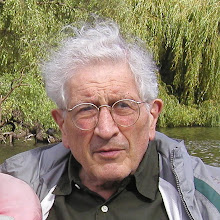A Statue on Trafalgar Square’s Fourth Plinth The Case for Mary Kingsley
What Trafalgar Square Monuments Mean
Nelson’s victory at the Battle of Aboukir Bay at the very start of the century, prompted a French force under Napoleon to leave Egypt. British influence now more easily brought India under British (rather than French) control. Nelson’s later victory at Trafalgar gave the square his Column and its name.
King George IV was the King at the time when Trafalgar Square was established. He represents the ‘ups and downs’ of the monarchy which, like it or not, was a medium for the tangled web of British identity, evolving over the century.
Two generals, Napier and Havelock won successes which did much to establish British rule in India. Like it or not, this was a major element in creating Britain’s relationship with the Indian subcontinent – and this is why so many of our citizens hail from there, and why the Mayor has felt it useful to establish offices there.
Britain’s relationship with Africa is represented in the square by South Africa House. Lord Malloch Brown stated, in a speech at the Royal Africa Society that there are now approximately a million people of African origin in Britain. English is now the world language which helps these diverse peoples to communicate.
The end of the century is not symbolised with any major figure – but we can redeem this;
we can have a statue of a woman, Mary Kingsley; and her achievements complete the 19th century in a way which relates it to the United Kingdom in which we now live.
Mary Kingsley
Mary Kingsley was a Londoner. In 1892, shortly after her parents died, Kingsley had not travelled abroad. She set out to … explore … the lesser known reaches of Africa. She wanted to continue her father’s “study of early religion and law”. Mary Kingsley's two journeys … were remarkable for being undertaken, alone, by a sheltered, middle-class, Victorian spinster in her thirties without any knowledge of African languages or French, or much money. On her first trip … she was referred to a new "French book of phrases in common use in Dahomey". The opening sentence of the book was "Help, I am drowning" followed by "Get up, you lazy scamps!". This was shortly followed by the question "Why has not this man been buried?" and its expected answer "It is fetish that has killed him, and he must lie here exposed with nothing on him until only the bones remain". On her second trip Kingsley explored up river from Lambaréné by canoe, reaching parts of the "Great Forest" not yet seen by a European. She collected insect, shell, plant, reptile, and fish specimens for the British Museum, as well as studying the culture and religion of the resident Fans.
…. On return to England in 1895, Mary Kingsley …. began work on writing her book Travels in West Africa. She also began a series of lectures based on her explorations and discoveries - she had returned with over a hundred species of fauna, including three previously unknown fish that were subsequently named after her. Her first lecture to the students and staff of a London medical school was entitled "African Therapeutics from a Witch Doctor's Point of View." Although she had planned to return to West Africa soon, she became so popular as a guest lecturer that she had to postpone her next trip.
Kingsley's first book, Travels in West Africa is a masterpiece of understatement - she … had travelled in West Africa wearing the same clothes that she habitually wore in England: long, black, trailing skirts, tight waists, high collars, and a small fur cap. These same clothes saved her life when she fell into a game pit, the many petticoats protecting her from being impaled on the stakes below. Later that same day, returning to her moored canoe, she found a hippopotamus standing over it and "scratched him behind the ear with my umbrella [until] we parted on good terms".
The first book was a best seller, and she immediately set about writing a second …. West African Studies was published, again by Macmillan, in 1899. At the same time, Kingsley became more active in various campaigns against colonial intervention in Africa. As a result of her extensive travels she had concluded that West Africa was much better served by the various traders … than the various groups of missionaries and settlers who typically had the ear of European governments. ….. Kingsley was quite influential, with direct access to the Colonial Office, and British colonial policy after 1890 showed a greater concern for retaining African social institutions. …
In 1899 … she was plunged into the thick of the recently declared Anglo-Boer War. She immediately went to the Army's Principal Medical Officer and offered her services … he suggested she try nursing Boer prisoners at a nearby camp in Simon's Town. Undeterred by an outbreak of typhoid and dysentery, Kingsley took up the post. She … drank wine instead of water, in an attempt to avoid the contagion. But she failed, and on 3 June 1900 at the age of 37 she died of enteric fever. At her request, she was buried at sea.
Mary Kingsley’s achievements included that she:
- influenced people in Britain to know more about and to respect African cultures
influenced other campaigners (such as E.D.Morel whose efforts were crucial in
bringing down King Leopold’s terrible oppression of the Congo.
see:
http://africanhistory.about.com/library/weekly/aa011002a.htm
and
http://www.aboutbritain.com/TrafalgarSquare.htm
and
http://www.royalafricansociety.org/
Friday, November 30, 2007
Subscribe to:
Post Comments (Atom)

No comments:
Post a Comment